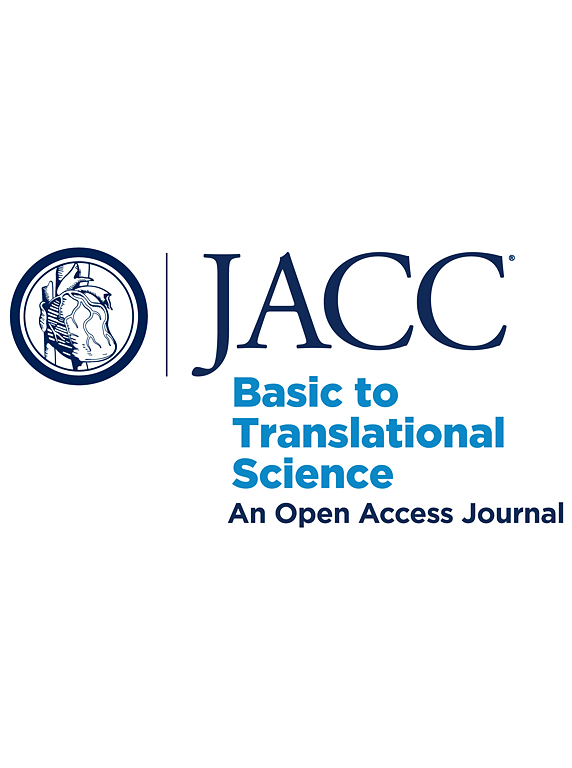阿托伐他汀治疗心内膜纤维弹性增生的临床前评价。
IF 8.4
1区 医学
Q1 CARDIAC & CARDIOVASCULAR SYSTEMS
引用次数: 0
摘要
心内膜纤维弹性增生是一种由内皮细胞通过心内膜向间质转化而激活成纤维的疾病,受转化生长因子-β通路的调节。他汀类药物阿托伐他汀通过上调KLF2,抑制转化生长因子-β通路来保护血管内皮。本研究旨在探讨阿托伐他汀对心内膜内皮细胞纤维化活化的影响。研究发现,在心内膜纤维弹性变性相关左心室限制的体外和体内模型中,阿托伐他汀治疗可降低心内膜内皮细胞的纤维化活化,增加KLF2表达。本文章由计算机程序翻译,如有差异,请以英文原文为准。
Preclinical Assessment of Atorvastatin for Treatment of Endocardial Fibroelastosis
Endocardial fibroelastosis is a condition caused by the fibrogenic activation of endothelial cells via endothelial-to-mesenchymal transition of the endocardium, which is regulated by the transforming growth factor-β pathway. Atorvastatin, a statin, can protect the vascular endothelium by up-regulating KLF2 and inhibiting the transforming growth factor-β pathway. This study aimed to investigate the effects of atorvastatin on the fibrogenic activation of endothelial cells in the endocardium. The study found that atorvastatin treatment reduced fibrogenic activation of endocardial endothelial cells and increased KLF2 expression in both in vitro and in vivo models of endocardial fibroelastosis–related left ventricular restriction.
求助全文
通过发布文献求助,成功后即可免费获取论文全文。
去求助
来源期刊

JACC: Basic to Translational Science
CARDIAC & CARDIOVASCULAR SYSTEMS-
CiteScore
14.20
自引率
1.00%
发文量
161
审稿时长
16 weeks
期刊介绍:
JACC: Basic to Translational Science is an open access journal that is part of the renowned Journal of the American College of Cardiology (JACC). It focuses on advancing the field of Translational Cardiovascular Medicine and aims to accelerate the translation of new scientific discoveries into therapies that improve outcomes for patients with or at risk for Cardiovascular Disease. The journal covers thematic areas such as pre-clinical research, clinical trials, personalized medicine, novel drugs, devices, and biologics, proteomics, genomics, and metabolomics, as well as early phase clinical trial methodology.
 求助内容:
求助内容: 应助结果提醒方式:
应助结果提醒方式:


